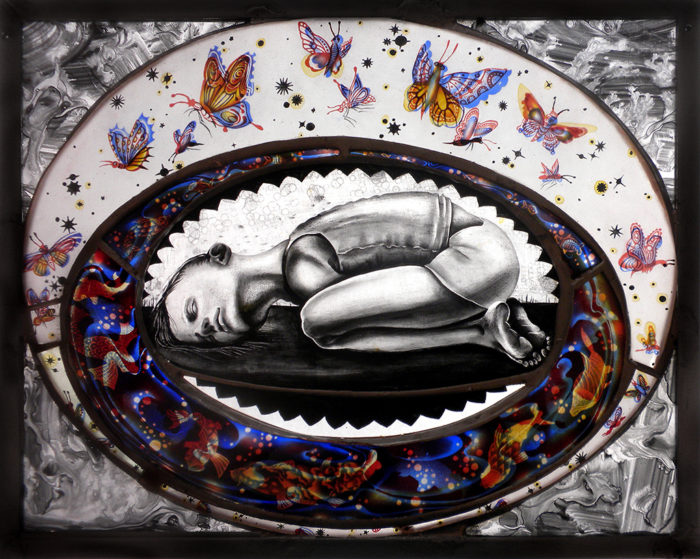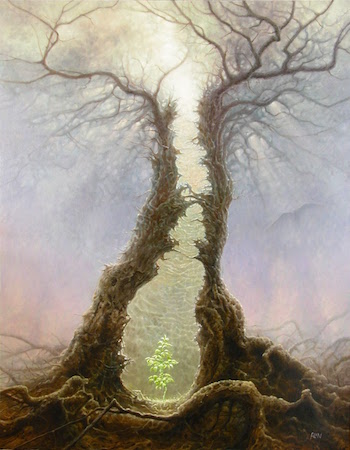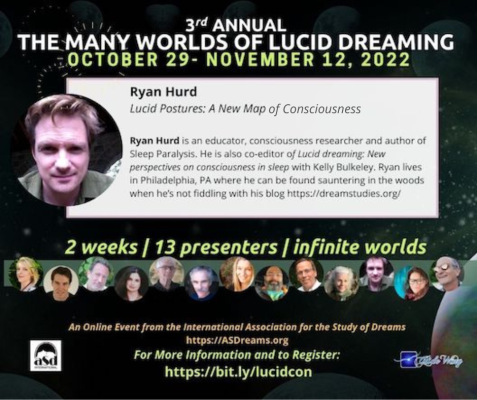
Lucid dreaming is practically a household name now, but so many confusions and misconceptions persist about what it really is like to be aware you’re dreaming.
Part of this issue stems from the wealth of introductory information on lucidity that caters more to what people want rather than what is really going on in the dream: I’m talking about wish-fulfillment here on a grand scale, powered by the lowest common denominator in marketing and search engine traffic.
Another part of the issue is that the lucid dreaming “community,” the scholars, dream workers and self-appointed teachers on the topic, are actually coming from vastly different paradigms about the potentials of lucid dreaming. We all have our darlings (me included!) — Our worldviews quite literally structure what is and isn’t possible.
In my own research into lucid dreaming (Hurd 2014, 2015, 2020), I have been working to place lucid dreaming into a cross-cultural and psychologically-mature perspective that allows for all the various eccentricities of the state of consciousness without watering down the boundaries of what “lucidity” means.
My conclusions: Turns out, there isn’t a World of Lucid Dreaming, but at least three.
The Three Worlds of Lucid Dreaming
- Dream awareness that is closely resembling waking consciousness. Rationality, planning, memory retrieval of waking intentions are all present giving the dreamer the sense of being “awake.”
- Dream awareness that approaches higher states of consciousness, such as meditative oneness and dialogue with other-worldly beings that are often interpreted to be “spiritual” or transpersonal in nature.
- Dream awareness that brings on healing states of consciousness, the reclamation of personal power, tantric-like emotional/sexual surges, dreams of ancestors and the dead, and existential/initiation-style lucid dreams that can sometimes be scary and nightmarish.
Guess what? All of these potentials are true! People have wildly different experiences in their lucid dreams based on their interests, personalities and cultural background/beliefs about the cosmos. And within a lifetime, we can experience lucid dreams from all of these worlds, even though we may not know how to act or behave at first.
For simplicity’s sake, we can envision all three of these potentials as the three levels of the cosmos described by First People around the world: the Upper, Middle and Lower worlds.

Upper World: Realm of spirit, Logos, abstraction, tending towards unitative consciousness (non dual states). Dreamer’s focus is on the quality of abstraction and witnessing, verbal/philosophical insight.
Middle World: Realm of creativity, where lucid dreamers enact waking life tasks and remember pre-conceived “bucket list” type intentions. Dreamer’s focus is on the ability to affect change, and recreate waking life scenarios (including athletic performance) in order to discover something new or experience something novel.
Lower World: Realm of soul, emotions, long term memory, core wounds, ancestors, tending towards emotional transformation and healing. Dreamer’s focus is on spontaneous imagery, emotional catharsis and healing/bodily insight.
What kind of lucid dreamer are you?
What kind of lucid dream world attracts you the most? Which one repels you? There’s no right or wrong. In fact, I’ve explored (and sometimes, avoided) all these realms over the years, and the strongest pull is constantly changing.
I’ve found this simple frame can be helpful for dreamers to zero in on their strongest intentions — because it’s the strong intentions that will be the most successful in the dreamworld.
Sound interesting? I’ll be exploring this concept and going further with it than ever before at the online conference Many Worlds of Lucid Dreaming October 29 – November 12, 2022. Join me and 12 other lucid dream experts as we present and build two weeks of community discussion. Student pricing is available to0. Learn more here.
References:
Hurd, R. (2014). Unearthing the Paleolithic mind in lucid dreams. In Hurd and Bulkeley’s (Eds.) Lucid dreaming: New perspectives on consciousness in sleep. Santa Barbara: Praeger.
Hurd, R. (2015). Chthonic zones and meditative highs: Reframing lucidity within transpersonal anthropology. Annual conference of the International Association for the Study of Dreams, Virginia Beach, VA, June 2015.
Hurd, R. (2020). Shamanistic realms of lucid dreaming: Exploring the three-tiered cosmos. Many worlds of lucid dreaming conference, hosted by International Association for the Study of Dreams.

excellent framework/article here! I’ve often considered there to be a geography from my deep end lucid dreaming experiences and the upper middle and lower model seems like a nice and simple starting point!
of course to define such clear boundaries when it comes to consciousness is a tricky (and paradoxical) fish!
PS: would love to hear the webinar but due to time differences I think that would be rather a bit too late for sitting round the computer for me (more like dreamtime!) please let me know if it’s recorded at all
abundant luminous dreaming
thank you! I agree totally, consciousness is tricky — this is just a frame for big picture purposes… a crude map for something that really is more of a spectrum than three actual worlds.
By the way, the webinar will be recorded for those who register. There’s now @ 35 spots left.
definitely a spectrum of experience! thanks, registered for the webinar so I can catchup on the record, thanks!
Thank you, Ryan—this is a really helpful frame of reference.
Hi Kirsten! Nice to hear from you — And thank you for the feedback!
Hi Ryan, glad that you have taken up blogging again! There is something about the number three and the number nine, that made those numbers surface in lots of ancient myths. I recently published a blog about “The Seed of Yggdrasil” http://mindfunda.com/yggdrasil/ where author Maria Kvaughil really digs into this nummerology (without explaining it, because you’d have to make up your own mind about it.
Allegedly, there is a maiden sleeping under the Tree of Life, who is dreaming up the cosmos. I think she is a lucid dreamer. (It would be a great and fun experience to visit her in a lycid dream, I will try to do that and let you know what happened.
Thank you for explaining this in a way that it has been hard to express. I have fit in all catergories all of my life. It’s hard to talk about it with other people. Most don’t understand A few friends do. It’s like living in two worlds.
What are your thoughts on sleep paralysis?
Hi Dean, it’s fascinating! Here’s my intro piece on treating SP naturally, getting over the fear so you can actually enjoy some of the experiences: http://dreamstudies.org/2010/01/22/sleep-paralysis-treatment-wake-up-cant-move/